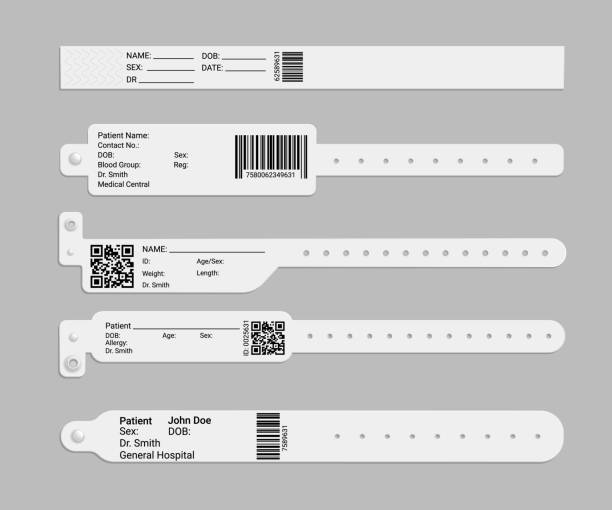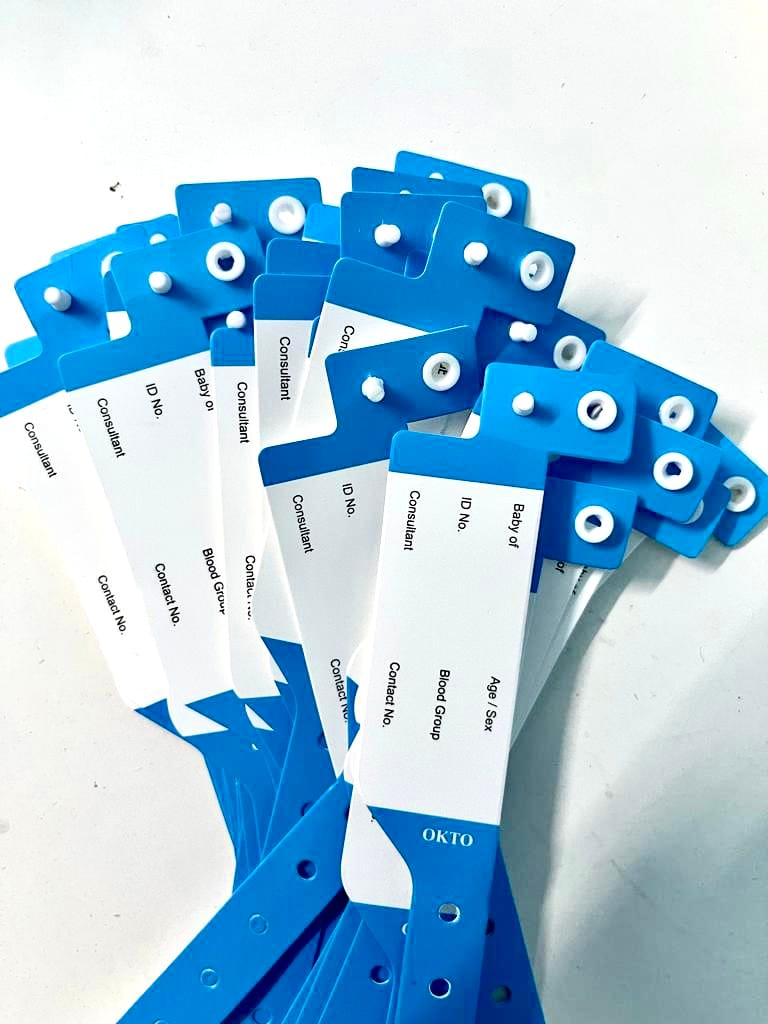Increase Patient Trust Fund with Accurate and Reliable Patient Identification Band Systems
Increase Patient Trust Fund with Accurate and Reliable Patient Identification Band Systems
Blog Article
Improving Patient Treatment With Efficient Recognition Bands
The execution of effective recognition bands is a critical component in enhancing individual treatment within medical care settings. As the landscape of client recognition develops, one have to consider the implications of these systems on total medical care distribution and person outcomes.
Value of Individual Recognition
Making certain accurate patient identification is vital in health care settings, as it directly impacts the safety and quality of treatment provided. Misidentification can lead to significant mistakes, consisting of carrying out the incorrect drug, executing wrong treatments, or miscommunicating crucial individual information. Such mistakes not just endanger client safety and security but can additionally lead to legal ramifications and decreased rely on medical care systems.
Efficient individual recognition is fundamental to establishing a protected environment where people receive tailored and proper care. It promotes the precise documentation of case histories, allergic reactions, and therapy plans, ensuring that doctor have access to essential details at all times. Robust recognition procedures assist improve interaction among medical team, improving collaboration and minimizing the threat of mistakes.

Kinds of Recognition Bands
Recognition bands play a vital role in preserving exact client documents and enhancing safety and security within health care environments. Different kinds of identification bands are used to cater to the details needs and demands of various client populations.

Another kind is the ankle joint band, which is especially helpful for newborns and infants, making sure that identification continues to be intact also during care procedures. Specialty bands, such as those for allergic reaction alerts or drop risk indicators, offer added layers of security by attracting prompt interest to crucial client conditions.
Lately, electronic recognition bands have gained popularity, incorporating barcodes or RFID innovation that can be scanned to swiftly get person data. These bands improve process and reduce the risk of human error throughout person recognition processes.
Advantages of Reliable Identification
Effective identification of individuals via using recognition bands adds dramatically to overall individual safety and care high quality. By making certain that each person is properly identified, health care providers can efficiently match medical treatments and treatments to the right person, lessening the threat of errors. This is specifically essential in settings with high patient turn over, where the possibility for misidentification is higher.
In addition, effective identification bands boost interaction among healthcare groups. Clear and go to website exact individual identification cultivates cooperation and makes certain that all staff member are conscious of a person's details requirements and medical background. This communication is necessary for providing coordinated treatment, particularly in emergency situation scenarios where time is important.

Ultimately, effective recognition with making use of identification bands not only safeguards patients but likewise advertises a culture of safety within healthcare centers (Patient Identification Band). By prioritizing exact recognition, health care organizations can improve outcomes and boost the total person experience
Implementing Recognition Solutions
While the significance of client identification is well identified, the execution of robust recognition systems presents a complicated challenge for medical care organizations. Developing efficient identification systems calls for a thorough technique, incorporating modern technology, workers training, and procedure combination.
First, organizations need to select appropriate recognition technologies, such as barcode scanning, RFID, or biometric systems. Patient Identification Band. These modern technologies should be reviewed based on price, functionality, and compatibility with existing infrastructure. A pilot program can help recognize prospective concerns before major application
Next, detailed training for staff is necessary. All personnel must comprehend the importance of exact patient recognition and be competent in using the selected modern technologies. Regular training updates and assessments can strengthen best methods and make certain continued compliance.
Additionally, health care organizations should establish standardized treatments for patient identification across all divisions, improving and minimizing inconsistencies communication. Normal audits can aid identify voids in adherence to these procedures.

Ultimately, an efficient implementation of identification systems not only improves individual security however likewise cultivates a society of liability and persistance within healthcare settings, guaranteeing consistent and reputable individual care.
Future Trends in Client Identification
Advancements in technology are set to revolutionize person recognition methods in health care settings. The integration of biometric recognition techniques, such as fingerprinting and facial acknowledgment, is anticipated to boost accuracy and safety and security. These technologies can significantly decrease the risk of misidentification, making certain that individuals get the proper therapies and drugs.
In important site addition, the application of blockchain technology for patient documents is gaining grip. This decentralized strategy can give a tamper-proof and protected approach for taking care of individual identifications, consequently simplifying accessibility to important details throughout different doctor.
One more trend is the raising use mobile wellness applications that leverage QR codes for person recognition. These applications permit for real-time updates and easy accessibility to person data, empowering healthcare specialists to make educated choices quickly.
Additionally, synthetic knowledge (AI) is poised to play a vital role in examining client identification information, identifying patterns, and anticipating possible recognition errors before they happen.
As these technologies develop, they guarantee not just to boost patient security yet additionally to enhance the overall performance of healthcare shipment systems. Accepting these technologies will be important for future-proofing person treatment practices.
Conclusion
Finally, reliable identification bands are vital for improving client security and care top quality within health care setups. By minimizing the risks related to misidentification, these bands facilitate timely and accurate details retrieval, eventually improving communication amongst medical care suppliers. The execution of durable recognition systems not only promotes a society of security but also positions healthcare institutions to adjust to future fads in person identification modern technology, making certain optimum results for clients in diverse professional settings.
As the landscape of individual identification advances, one need to take into consideration the implications of these systems on total medical care delivery and individual results.Reliable person recognition is essential to establishing a protected setting where individuals receive customized and appropriate treatment. Ultimately, focusing on effective person identification techniques not only cultivates a culture of safety and security but also adds to improved individual results and overall contentment with medical care services.
Reliable recognition of patients with the usage of identification bands contributes substantially to overall individual safety and security and care high quality. The execution of robust recognition systems not just fosters a society of safety and security but likewise placements healthcare organizations to adjust to future trends in individual recognition technology, making sure optimum outcomes for people in diverse scientific settings.
Report this page